Презентацию подготовили: Николаева Кристина ВУ 3 -1 А

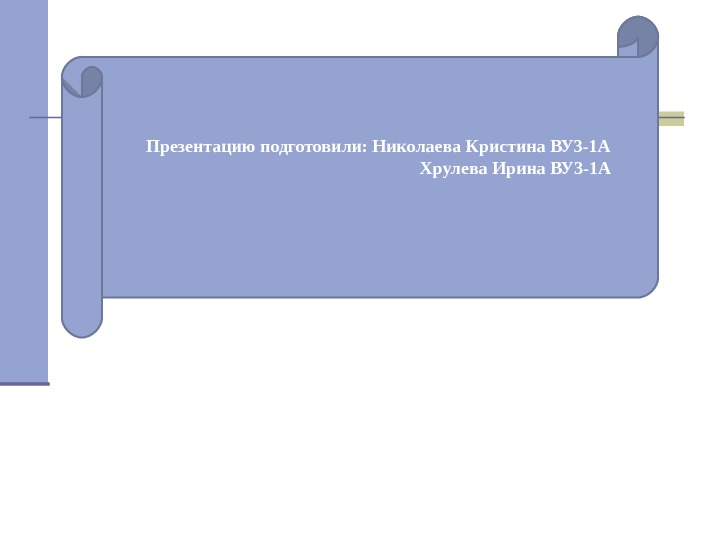
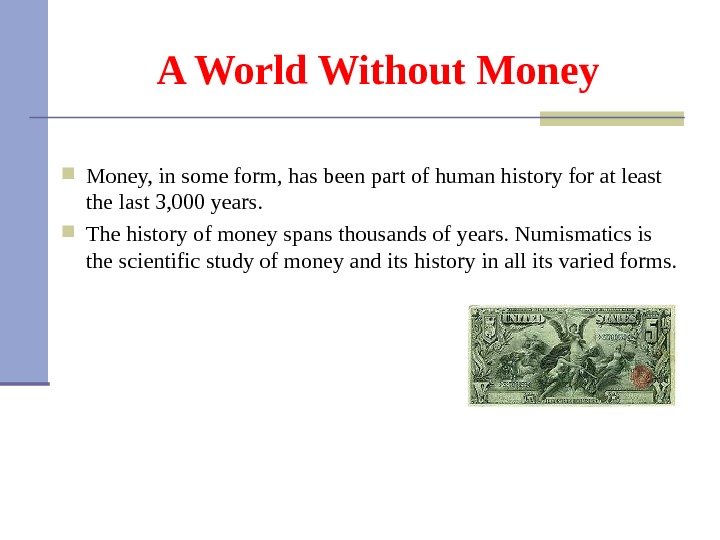
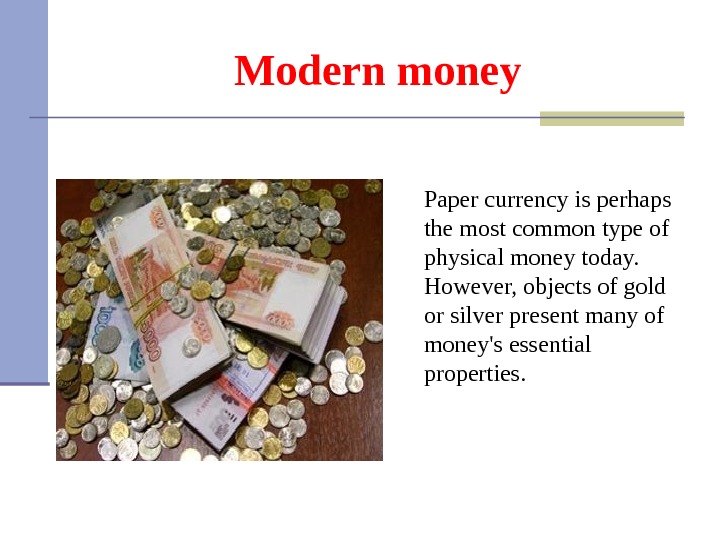
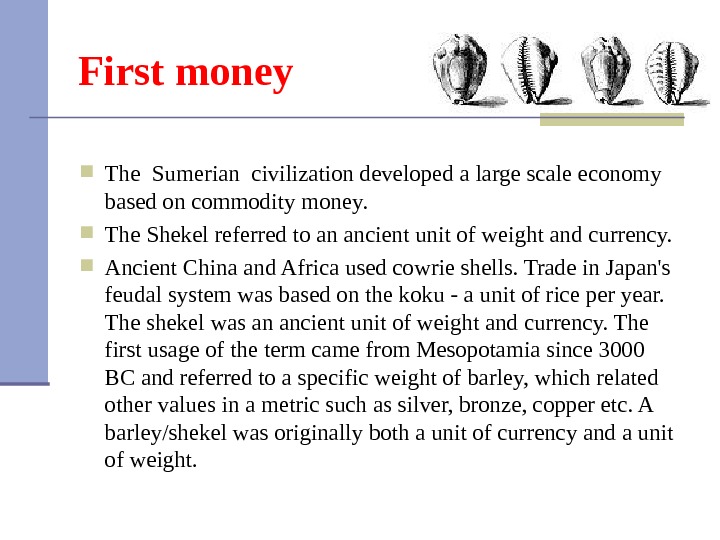
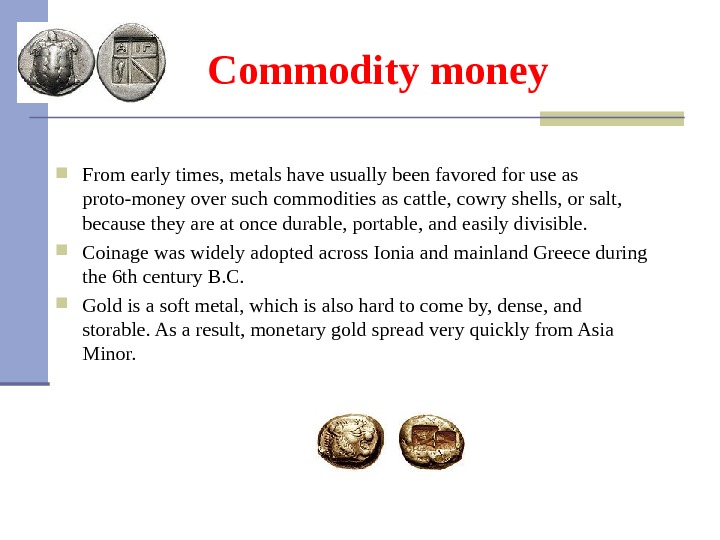
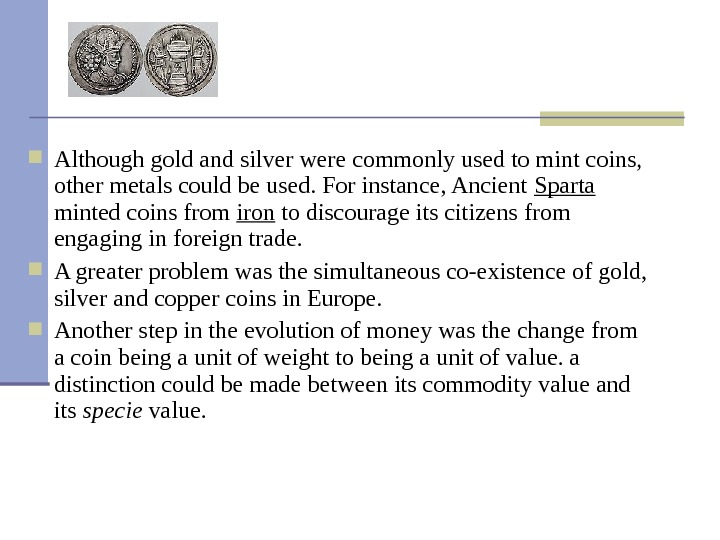
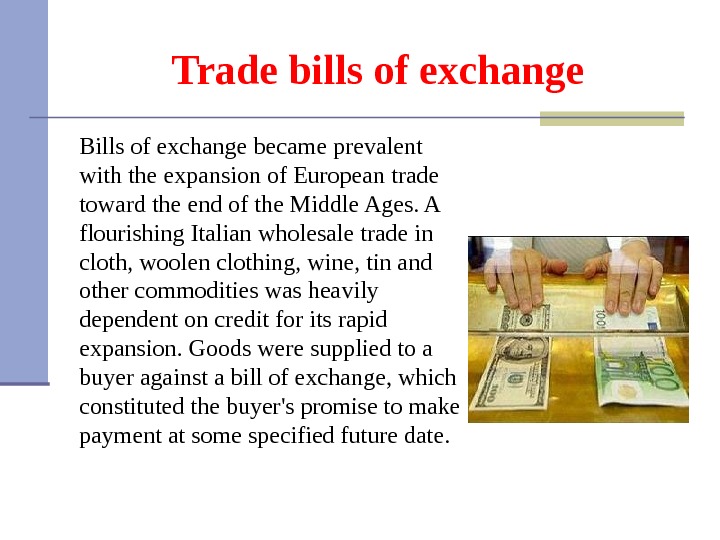
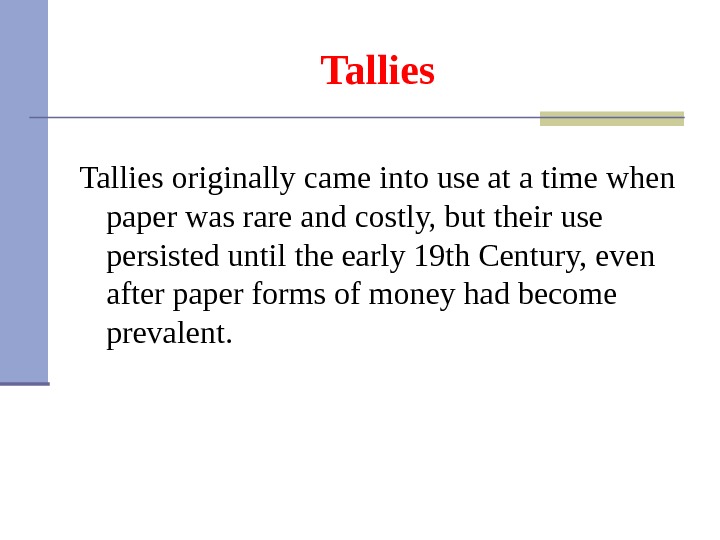
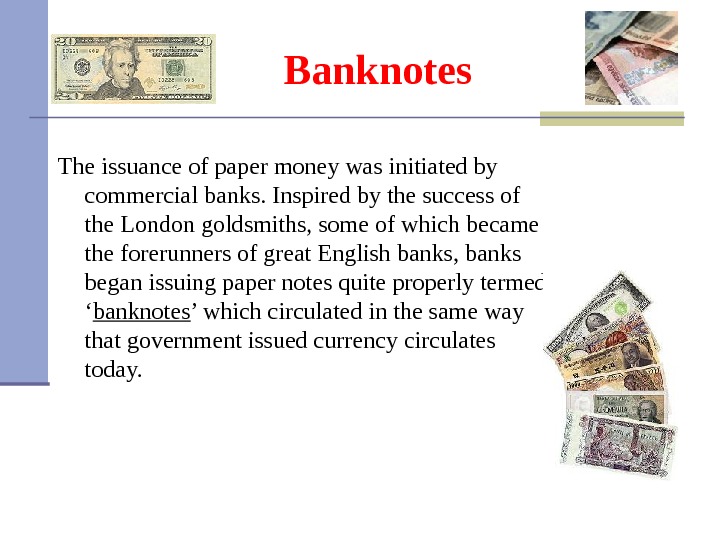
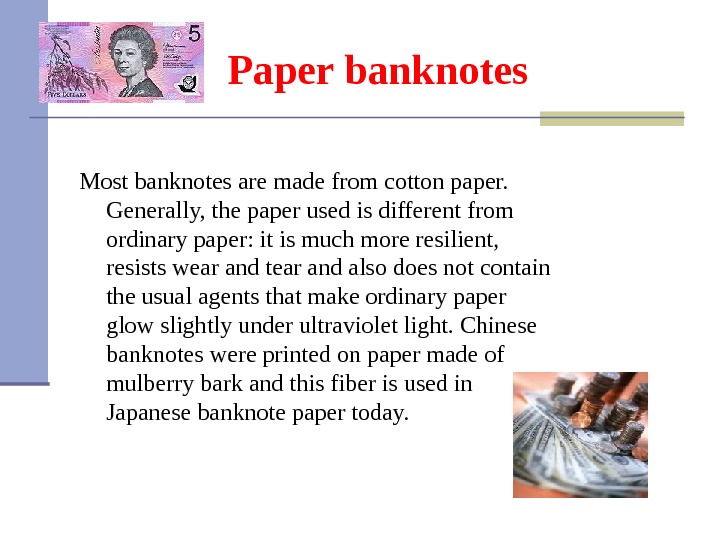
- Размер: 299 Кб
- Количество слайдов: 10
Описание презентации Презентацию подготовили: Николаева Кристина ВУ 3 -1 А по слайдам
 Презентацию подготовили: Николаева Кристина ВУ 3 -1 А Хрулева Ирина ВУ 3 -1 А
Презентацию подготовили: Николаева Кристина ВУ 3 -1 А Хрулева Ирина ВУ 3 -1 А
 A World Without Money, in some form, has been part of human history for at least the last 3, 000 years. The history of money spans thousands of years. Numismatics is the scientific study of money and its history in all its varied forms.
A World Without Money, in some form, has been part of human history for at least the last 3, 000 years. The history of money spans thousands of years. Numismatics is the scientific study of money and its history in all its varied forms.
 Modern money Paper currency is perhaps the most common type of physical money today. However, objects of gold or silver present many of money’s essential properties.
Modern money Paper currency is perhaps the most common type of physical money today. However, objects of gold or silver present many of money’s essential properties.
 First money The Sumerian civilization developed a large scale economy based on commodity money. The Shekel referred to an ancient unit of weight and currency. Ancient China and Africa used cowrie shells. Trade in Japan’s feudal system was based on the koku — a unit of rice per year. The shekel was an ancient unit of weight and currency. The first usage of the term came from Mesopotamia since 3000 BC and referred to a specific weight of barley, which related other values in a metric such as silver, bronze, copper etc. A barley/shekel was originally both a unit of currency and a unit of weight.
First money The Sumerian civilization developed a large scale economy based on commodity money. The Shekel referred to an ancient unit of weight and currency. Ancient China and Africa used cowrie shells. Trade in Japan’s feudal system was based on the koku — a unit of rice per year. The shekel was an ancient unit of weight and currency. The first usage of the term came from Mesopotamia since 3000 BC and referred to a specific weight of barley, which related other values in a metric such as silver, bronze, copper etc. A barley/shekel was originally both a unit of currency and a unit of weight.
 Commodity money From early times, metals have usually been favored for use as proto-money over such commodities as cattle, cowry shells, or salt, because they are at once durable, portable, and easily divisible. Coinage was widely adopted across Ionia and mainland Greece during the 6 th century B. C. Gold is a soft metal, which is also hard to come by, dense, and storable. As a result, monetary gold spread very quickly from Asia Minor.
Commodity money From early times, metals have usually been favored for use as proto-money over such commodities as cattle, cowry shells, or salt, because they are at once durable, portable, and easily divisible. Coinage was widely adopted across Ionia and mainland Greece during the 6 th century B. C. Gold is a soft metal, which is also hard to come by, dense, and storable. As a result, monetary gold spread very quickly from Asia Minor.
 Although gold and silver were commonly used to mint coins, other metals could be used. For instance, Ancient Sparta minted coins from iron to discourage its citizens from engaging in foreign trade. A greater problem was the simultaneous co-existence of gold, silver and copper coins in Europe. Another step in the evolution of money was the change from a coin being a unit of weight to being a unit of value. a distinction could be made between its commodity value and its specie value.
Although gold and silver were commonly used to mint coins, other metals could be used. For instance, Ancient Sparta minted coins from iron to discourage its citizens from engaging in foreign trade. A greater problem was the simultaneous co-existence of gold, silver and copper coins in Europe. Another step in the evolution of money was the change from a coin being a unit of weight to being a unit of value. a distinction could be made between its commodity value and its specie value.
 Trade bills of exchange Bills of exchange became prevalent with the expansion of European trade toward the end of the Middle Ages. A flourishing Italian wholesale trade in cloth, woolen clothing, wine, tin and other commodities was heavily dependent on credit for its rapid expansion. Goods were supplied to a buyer against a bill of exchange, which constituted the buyer’s promise to make payment at some specified future date.
Trade bills of exchange Bills of exchange became prevalent with the expansion of European trade toward the end of the Middle Ages. A flourishing Italian wholesale trade in cloth, woolen clothing, wine, tin and other commodities was heavily dependent on credit for its rapid expansion. Goods were supplied to a buyer against a bill of exchange, which constituted the buyer’s promise to make payment at some specified future date.
 Tallies originally came into use at a time when paper was rare and costly, but their use persisted until the early 19 th Century, even after paper forms of money had become prevalent.
Tallies originally came into use at a time when paper was rare and costly, but their use persisted until the early 19 th Century, even after paper forms of money had become prevalent.
 Banknotes The issuance of paper money was initiated by commercial banks. Inspired by the success of the London goldsmiths, some of which became the forerunners of great English banks, banks began issuing paper notes quite properly termed ‘ banknotes ’ which circulated in the same way that government issued currency circulates today.
Banknotes The issuance of paper money was initiated by commercial banks. Inspired by the success of the London goldsmiths, some of which became the forerunners of great English banks, banks began issuing paper notes quite properly termed ‘ banknotes ’ which circulated in the same way that government issued currency circulates today.
 Paper banknotes Most banknotes are made from cotton paper. Generally, the paper used is different from ordinary paper: it is much more resilient, resists wear and tear and also does not contain the usual agents that make ordinary paper glow slightly under ultraviolet light. Chinese banknotes were printed on paper made of mulberry bark and this fiber is used in Japanese banknote paper today.
Paper banknotes Most banknotes are made from cotton paper. Generally, the paper used is different from ordinary paper: it is much more resilient, resists wear and tear and also does not contain the usual agents that make ordinary paper glow slightly under ultraviolet light. Chinese banknotes were printed on paper made of mulberry bark and this fiber is used in Japanese banknote paper today.

